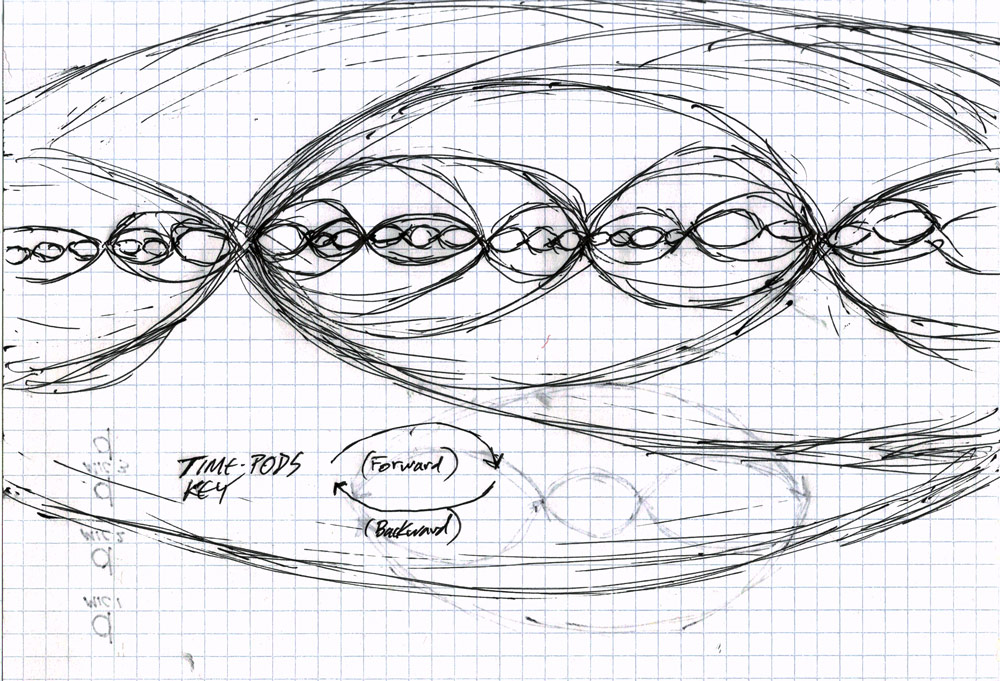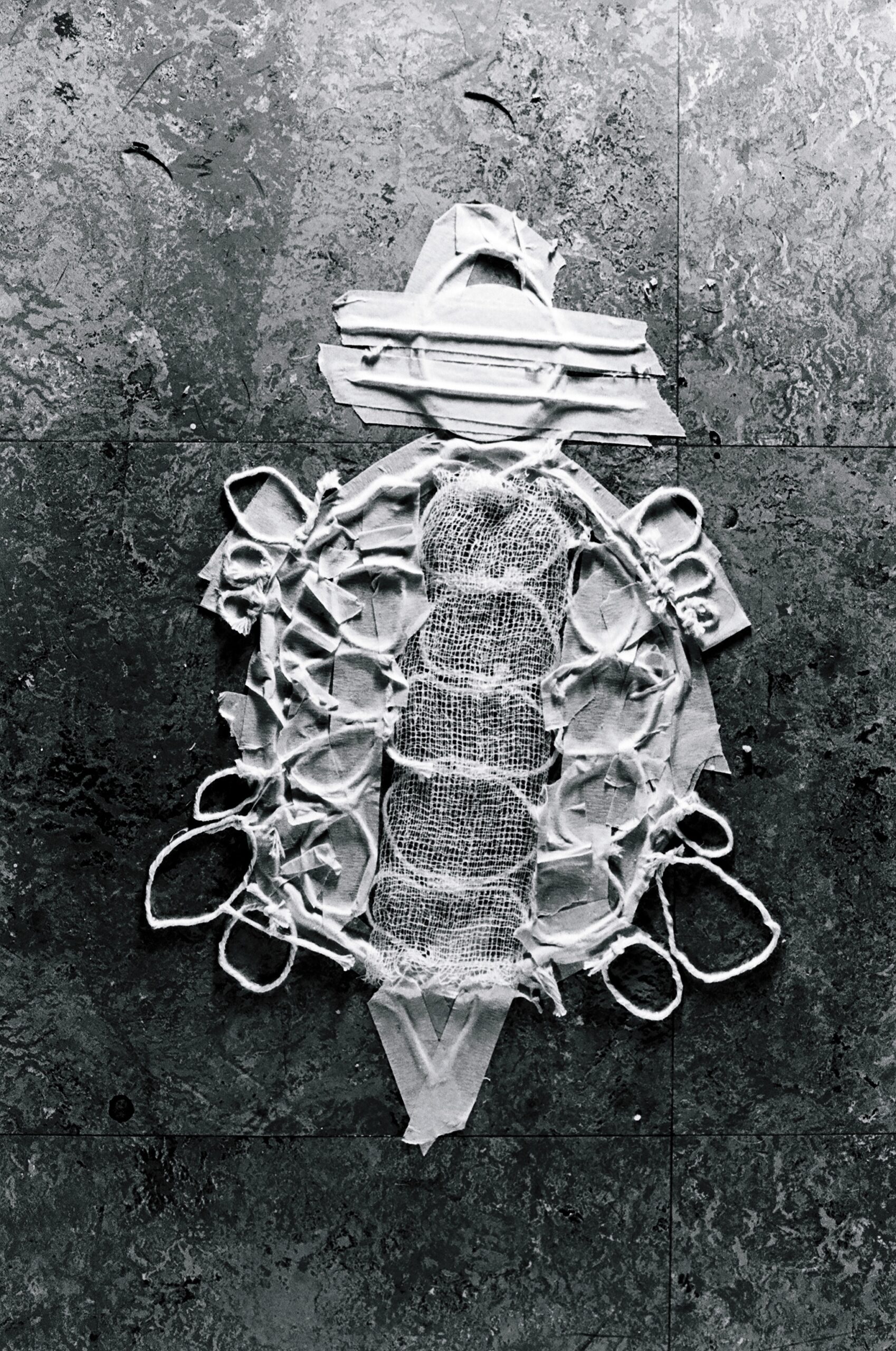Listen LIVE now on 90.1 FM KKFI Kansas City Community Radio – From Ark to Microchip – 11:30pm.
Shows are typically archived and available for 2 weeks after broadcast.
“A joyous celebration of the pagan roots of man, reinterpreted through the prism of modern technology…”
—Ed Pinsent, The Sound Projector (UK)
SCRAT
for video projections, 8‐channel sound, violin, flute, dog whistle, bass clarinet, alto sax, contralto clarinet, bassoon, cello, audio oscillators, Tesla coil, electro‐magnetic whistlers, percussion, animal and environmental sounds
“…bursts of static erupt like thunder out of stillness, the seesaw squeal of a violin covers frogs and insects, and a thrumming counterpoint of oscillators evokes the whine of cicadas.”‐‐Other Music
“The willingness to incorporate extra‐musical scientific phenomena as musical elements in their own right or as the basis of musical notation is also evident in Scrat, whose instrumental parts are graphic notations from the phenomena as described in the notes, including events as diverse as solar storm activity and male courtship songs of the Drasophila Virilis. These, Frizzell explains, take the form of X/Y graphs from scientific readings with musicians setting relative pitch relations within their instruments’ ranges, and within prescribed time limits in the score.”
–Dan Warburton, Signal to Noise
“’Scrat’ is from 1994, a joint composition with Tony Allard (who created the video) and another mixed‐media work where all the elements ‐ live performance, electronic and acoustic music, mixture with tapes, live mixing, and the natural acoustics of the performance venue are all equally important to the work. It’s conceptual, too ‐ linking the folklore of Scrat Rut (an old German hobgoblin figure) to the work of the 18th century inventor Volta, via the traditional Maypole dance; en route, making observations about the human ‘electricity’ that is generated by human energy (particularly sexual energy). Frizzell demonstrated this briefly at the Red Rose Club in London when he ‘wired up’ the entire audience to a Tesla coil. Everyone held hands to complete the circuit, resulting in an audible high tone over the PA ‐ which varied in pitch as we were encouraged to generate more emotional excitement through bodily contact. This recording (on the Natural Selection CD) is a joyous celebration of the pagan roots of man, reinterpreted through the prism of modern technology; it exploits the natural energies of electro‐magnetic flux, and contains some gorgeous environmental recordings of birdsong, insects and thunderstorms in among the buzzing noises.”‐‐Ed Pinsent, The Sound Projector,
SCRAT BACKGROUND
Scrat rut, old German name for a spiritual being who inhabited woods, akin to the English hobgoblin, gahlin, or the Irish sluricaune. He is sometimes called waltscrat and is affiliated with fields, the domestic spjrit and the ghost haunting the house. He is most often a lascivious character. Scrat in old English also means hermaphrodite. Medieval vocabularies explain Scrat by Latin equivalents, wElectricity, from the Greek elektra referring to amber, the fossilized resin. Godfather of Scrat: Alessandro Giuseppe Antonio Anastasio Volta, born February 18, 1745, inventor of electrophorous, the Volta pistol, the lampada ‐ a gas, the eudio‐meter, electric signaling, the condensing electroscope, the apparatus for exploring the elec‐tric charges in the atmosphere by means of a flame, and the Volta pile. Volta was probably the first to ignite inflammable gases in closed vessels with an electric charge. The investigations of Volta mark the transition from the old regime of electrostatics to that of galvanic action. Volta tried the effects of electricity on detached portions of animals (after the discoveries of Galvani), noting contractions of muscles due to excitation along the nerve pathways. A prepared frog with electrical apparatus was shown by Volta to Napoleon
The model for SCRAT comes from the May pole dance, which is performed through rotating 360 degree sound projection. Sounds emanate from the electric spark itself recalling an earlier fascination for electricity as a kind of generative force or fluid. Electricity is that magical, inner, sexual, invisible and mysterious fire of a reverie that must have been born with life itself. The instruments used are electric in nature‐‐Tesla coil, Jacob’s ladder, oscillators. Radio receivers are purposefully tuned off station to receive bio and electromagnetic flux.
The initial sequence of SCRAT utilizes the structure of a whistler, or electromagnetic tornado, that completes a sweep of the electromagnetic spectrum beginning with VLF (very low frequencies) on up through FM, AM, CB, shortwave, etc. in one swooping glissando. Likewise, the instruments follow a glissando‐like design, beginning with the lowest tone possible to perform (via oscillator) and moving through all the instruments assembled as their corresponding frequency range come In play.
 COMPOSING WITH TIME‐PODS
COMPOSING WITH TIME‐PODS
In performance, the spirit of SCRAT is embodied in seed-pod form, an organic information center of condensed history that becomes animated by electricity. This seed pod—like seeds in nature‐‐contains a potentia—the future, past, and present encoded in the score that is played forwards and backwards simultaneously. This potentia is electricity personified as SCRAT, that androgynous, trickster.
Each orb in the detail above is a time‐pod of the same recorded sound event. The top line of each orb is the forward sounding event, and the bottom line of the orb is the same sound moving backwards. Sounds/time events pass through themselves in center of each pod—fusing, filtering and, for a moment, dissolving.
The visual sketch‐score for the SCRAT soundscape recordings traces these pod‐shaped sound events passing through themselves as they unfold in time. Pods form into bilateral strings with smaller time‐pods within larger ones in a fractal manner. The result is the discernible humanoid body of the SCRAT itself.

